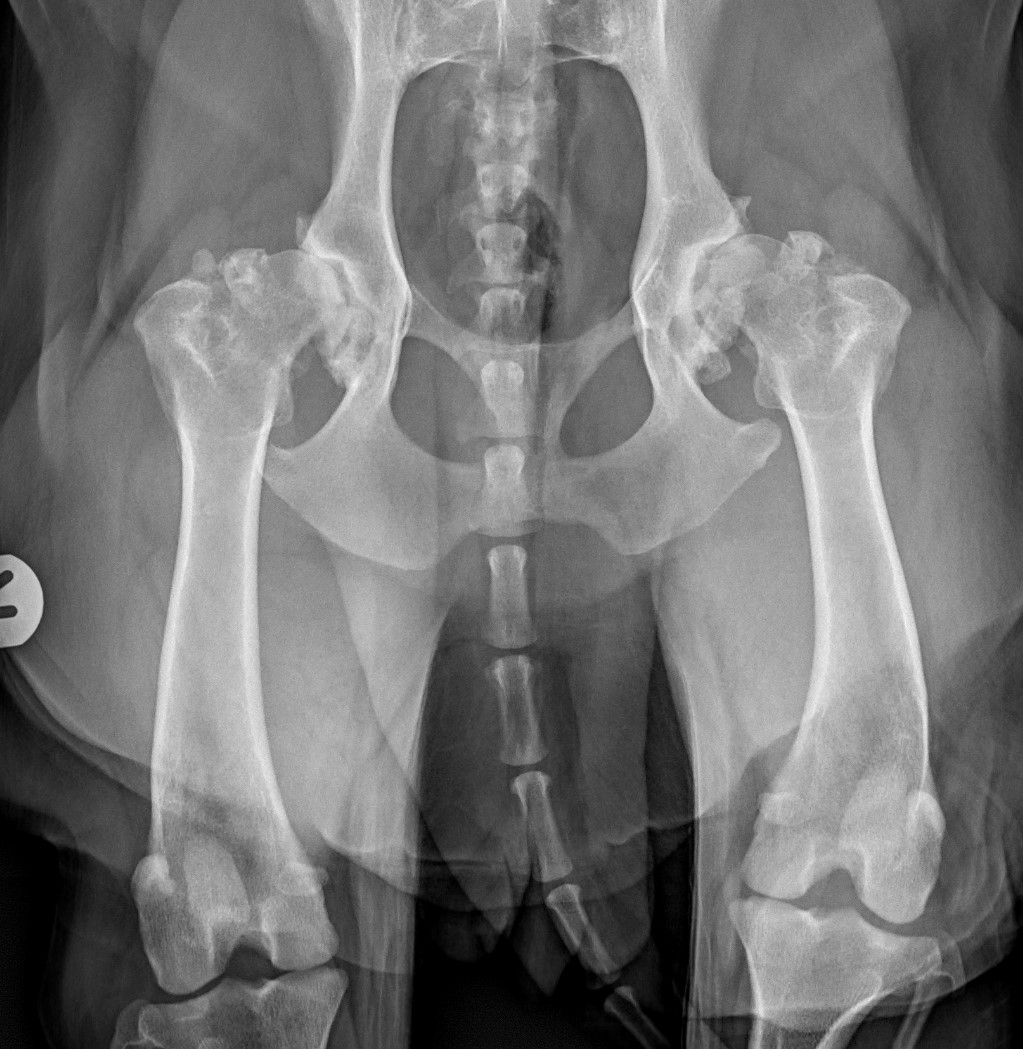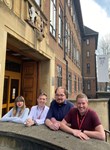New more accurate technique discovered for understanding joint behaviour in world’s most common musculoskeletal condition
A new technique that can determine joint behaviour in health and in conditions such as osteoarthritis with more accuracy than ever before has been created by researchers.
A broad coalition of life and physical scientists from the Royal Veterinary College (RVC), Edinburgh Napier University, UCL, Oregon State University (US), 3Dmagination and the Diamond Light Source, have developed this ground-breaking technique. This has important implications given the major social, health and financial burden of osteoarthritis globally.
Osteoarthritis is a condition that causes joints to become painful and stiff. Joints respond to and absorb loads over a wide range of scales over a lifetime by deforming or straining our soft tissue and bone structures. The level of deformation or strain is measured on the nanometre scale within structures such as collagen fibres, on the micron scale in chondrocytes, and the macroscale in bones. Previously these strains have only been measured at the sub-millimetre scale in whole joints during loading. This latest work measured these strains with an accuracy of better than 100 nanometres - more than 1,000 times more precisely - in mouse knee joints at different stages during the onset of osteoarthritis.
Prior high-resolution imaging methods have been constrained by destructive sample treatments, sample-size restrictions and lengthy scan times. This research was therefore conducted in order to develop a technique which enabled high-resolution imaging and quantification of mechanical strains to help determine a deeper understanding of how our joints react as osteoarthritis progresses.

In order to maintain both the integrity of samples, and the quality of the images collected, a high flux ‘pink’ beam was used. This allowed the team to easily visualise features in joints with unprecedented resolution. An indenter and a bespoke loading rig then allowed the team to accurately apply identical, controlled loads to the joints being studied. A code was then developed for digital volume correlation – a method used to quantify 3D strains across the complex structure of the joint.
Working with scientists from the RVC, the team tested this technique on male STR/Ort mice – which develop osteoarthritis with ageing, much like in humans – at a range of disease stages. They were then compared with male age-matched control mice who show no signs of osteoarthritis with ageing.
The study combined various technology including synchrotron x-ray tomographic imaging at the Diamond Light Source, a nano-precision loading frame originally designed by UCL for testing aeroengine components, as well as a software code developed by Oregon State University to measure motion between subsequent 3D images with a resolution 1/20th of a voxel (3D pixel).
This breakthrough is important as articular cartilage must last a lifetime to protect joints from friction and damage during movement. However, the mechanical and structural relationship between this function and neighbouring tissues and in particular, how they interact under joint loading, is currently unknown.
This study showed that, hierarchical changes in tissue structure and mechanical behaviour can be simultaneously visualised in healthy and osteoarthritic joints, and that the tissue structure at the cellular level correlates with the mechanical performance of the whole joint.
Andrew A Pitsillides, Professor of Skeletal Dynamics and Comparative Biomedical Sciences at the RVC, said:
“Our technique for nanometre scale measurement of real deformation in whole joints under conditions closely mimicking their normal use will, I hope, bring new understanding of joint behaviour in health and in osteoarthritis that devastates the lives of so many.”
Dr Kamel Madi, Director at 3Dmagination Ltd, said:
“Measuring precise and reliable nanoscale strains in this complex biomedical system requires a perfect blend of skills, from in situ imaging to reconstruction and quantification of several terabytes of dataset, which is the team’s expertise at 3Dmagination Ltd. I am also passionate about bringing the images to life and I hope our method will contribute to uncovering the secrets of osteoarthritis in the future.”
The full paper can be accessed through Nature Research: https://www.nature.com/articles/s41551-019-0477-1
Notes to Editors
For more information please contact:
- Ploy Radford (ploy.radford@plmr.co.uk) or Jasmin De Vivo (Jasmin.DeVivo@mangomarketing.com)
- Press Line: 0800 368 9520
About the RVC
- The Royal Veterinary College (RVC) is the UK's largest and longest established independent veterinary school and is a Member Institution of the University of London. It was the first in the world to hold full accreditation from AVMA, EAEVE, RCVS and AVBC.
- The RVC is ranked as the world’s number one veterinary school in the QS World University Rankings by subject, 2019.
- The RVC offers undergraduate and postgraduate programmes in veterinary medicine, veterinary nursing and biological sciences.
- In 2017, the RVC received a Gold award from the Teaching Excellence Framework (TEF) – the highest rating a university can receive.
- A research led institution with 79% of its research rated as internationally excellent or world class in the Research Excellence Framework 2014.
- The RVC provides animal owners and the veterinary profession with access to expert veterinary care and advice through its teaching hospitals and first opinion practices in London and Hertfordshire.
You may also be interested in:
-
New collaboration between the RVC and UCB seeks to better understand diseases of excessive bone formation
Research, led by the RVC, will explore disease causing mechanisms of two severe bone diseases …

